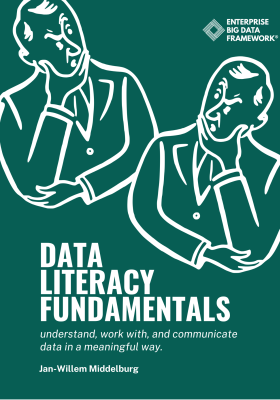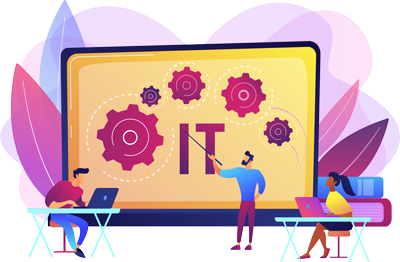
Data Literacy Fundamentals Book
- By Jan-Willem Middelburg
- Publisher: Enterprise Big Data Framework Alliance
- Available in: English
- Total pages: 97
- ISBN: 12345678910
Understand, work with, and communicate data in a meaningful way.
In the modern world, data has become an essential part of our daily lives. From business decisions to personal choices, understanding and working with data is crucial. In this digital “Data Literacy Fundamentals” by Jan-Willem Middelburg is a comprehensive guide to mastering the basics of data literacy. Middelburg is an experienced data scientist and educator who has worked with organizations around the world to help them build data literacy skills. In “Data Literacy Fundamentals”, he covers all the essential concepts and techniques that are needed to become a confident, informed data consumer and decision-maker.
Master the basics of digital literacy
In “Data Literacy Fundamentals”, author Jan-Willem Middelburg provides readers with a comprehensive guide to mastering the basics of data literacy. Drawing on his extensive experience in data science and education, Middelburg breaks down complex concepts into clear, easy-to-understand language and provides practical examples and exercises to reinforce key concepts.
The book is divided into four parts, each covering a different aspect of data literacy.
Part 1: What is data literacy?
An introduction to data literacy, explaining what it is and why it matters. Middelburg also covers some of the common challenges that people face when working with data, such as understanding different data types and dealing with missing data.
Part 2: An overview of data analysis
This chapter dives into data analysis, providing readers with an overview of the key concepts and techniques used to analyze data. From basic statistics to regression analysis, this section covers all the essential tools that are needed to make sense of data. Middelburg also provides practical examples and exercises to help readers apply these concepts to real-world problems.
Part 3: What is Data Visualization?
Understand data visualization, an essential skill for anyone working with data. Middelburg explains the principles of effective data visualization, showing readers how to create clear and compelling charts and graphs that communicate their findings effectively. He also covers some of the common mistakes that people make when visualizing data, and provides tips and tricks for avoiding them.
Part 4: Learn how to communicate data
Finally, this chapter covers data communication, showing readers how to present their findings effectively to others. Middelburg explains the importance of understanding your audience and tailoring your message accordingly. He also covers some of the common challenges that people face when communicating data, such as avoiding jargon and dealing with difficult questions
Practice using practical examples and exercises
Throughout the book, Middelburg emphasizes the importance of hands-on learning. Each chapter includes practical examples and exercises that allow readers to apply the concepts they have learned to real-world problems. There are also plenty of tips and tricks for working with data, from how to clean and prepare data to how to use software tools like Excel and Python.
Overall, “Data Literacy Fundamentals” is an excellent resource for anyone looking to improve their data literacy skills. With its accessible writing style, practical examples and exercises, and comprehensive coverage of key concepts and techniques, this book provides a solid foundation for building your knowledge and expertise. Whether you’re new to data literacy or looking to brush up on your skills, “Data Literacy Fundamentals” is a valuable resource for anyone looking to work effectively with data.






